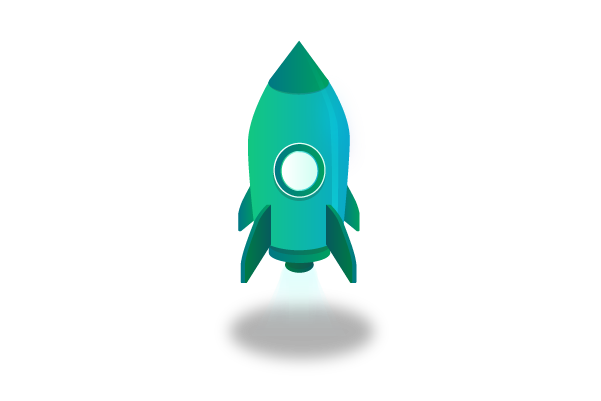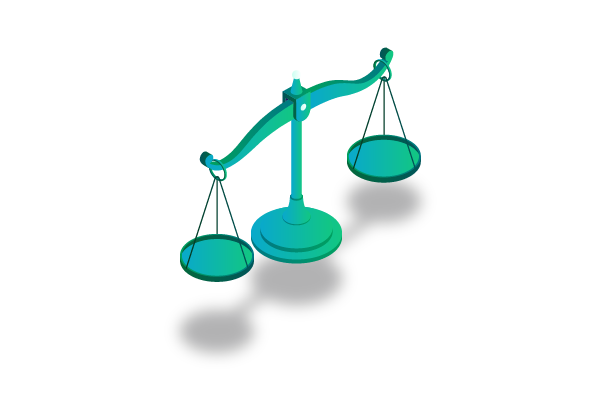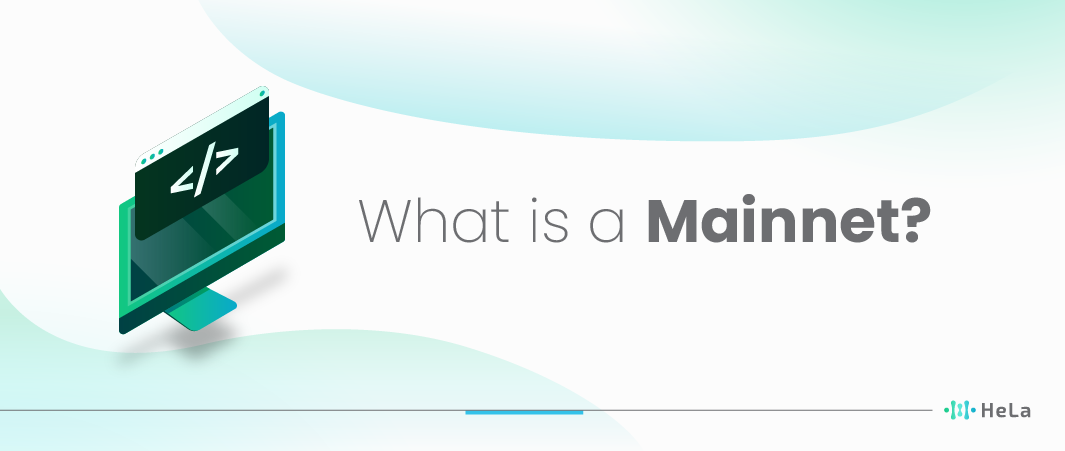The world of cryptocurrency is intriguing and complex, with various terms and technologies that can be overwhelming for both newcomers and seasoned enthusiasts. Central to understanding this digital ecosystem is the concept of a mainnet. This article delves into the essence of mainnets, exploring their role and importance in the realm of cryptocurrencies.
Mainnets are the heart of blockchain technologies, serving as the final and real environment where transactions are executed and recorded. They are the cornerstone upon which the reliability and functionality of any cryptocurrency are built. Understanding what a mainnet is, therefore, not only demystifies a key aspect of blockchain technology but also provides insights into how digital currencies operate in the real world.
In this comprehensive guide, we will navigate through the intricacies of mainnets, from their basic definition to their critical role in ensuring the stability and security of cryptocurrencies. We will explore the differences between mainnets and testnets, the process of launching a mainnet, and the challenges involved in maintaining it. This article aims to provide a thorough understanding of mainnets, making it an invaluable resource for anyone looking to deepen their knowledge of blockchain technology.
What is a Mainnet?
Mainnet refers to the main network or the primary blockchain where actual transactions and operations take place. It is the live and functioning version of a blockchain where all the nodes in the network are actively participating in the consensus process, validating transactions, and maintaining the distributed ledger. Here are some key points to help you understand Mainnets in blockchain technology:
Development Stages
- Testnet: Before launching a Mainnet, blockchain projects often deploy a test network called a Testnet. Testnets are used for developers to test and experiment with the blockchain’s features and functionalities without using real cryptocurrency. It helps identify and resolve potential issues before the Mainnet goes live.
- Mainnet: Once the development and testing phases are complete, the blockchain transitions to the Mainnet. This is the fully operational version that handles real transactions and data.
Consensus Mechanism
- The Mainnet relies on a consensus mechanism, which is a set of rules that determine how nodes agree on the state of the blockchain. Common consensus mechanisms include Proof of Work (PoW), Proof of Stake (PoS), Delegated Proof of Stake (DPoS), and others.
Real Transactions
- On the Mainnet, users can make actual transactions with real value. Whether it’s sending and receiving cryptocurrency or executing smart contracts, these operations are recorded on the Mainnet’s immutable ledger.
Decentralization
- One of the fundamental principles of blockchain is decentralization. The Mainnet typically involves a distributed network of nodes (computers) that work together to maintain the blockchain. This decentralization helps ensure security, transparency, and censorship resistance.
Token Deployment
- If the blockchain involves the creation of tokens (cryptocurrencies or utility tokens), these are usually deployed on the Mainnet. This is when these tokens become tradable and usable within the ecosystem.
Economic Activity
- The Mainnet is where the economic activity of a blockchain project occurs. Participants can engage in various activities, such as staking, mining, providing liquidity, or interacting with decentralized applications (DApps).
Upgrades and Forks
- Upgrades to the blockchain protocol often occur on the Mainnet. These can include improvements to scalability, security, or the addition of new features. In some cases, the community might decide to fork the blockchain to create a separate chain with different rules.
Understanding the Mainnet is crucial for anyone involved in blockchain projects, including developers, users, and investors, as it represents the live and operational state of the blockchain network.
The Launch and Evolution of a Mainnet

The term “Mainnet” refers to the main network of a blockchain, where the actual transactions and operations take place. The launch and evolution of a Mainnet represent crucial milestones in the development and maturation of a blockchain project.
1. Initial Development
The journey begins with the conceptualization and development of the blockchain protocol. This involves designing the consensus mechanism, creating the tokenomics, and addressing security considerations. The development team works tirelessly to ensure the robustness and scalability of the Mainnet.
2. Testnet Phase
Before the official launch, a Testnet is deployed to simulate real-world conditions without risking actual assets. This phase allows developers to identify and rectify potential vulnerabilities, fine-tune performance, and gather valuable feedback from the community.
3. Mainnet Launch
The Mainnet launch is a significant event, marking the transition from a theoretical concept to a fully functional blockchain network. It involves deploying the protocol to the live network, making it accessible to users and developers. The launch is often accompanied by celebrations within the community, as it signifies the project’s readiness for real-world use.
4. Early Challenges and Upgrades
After the Mainnet launch, the network may encounter unforeseen challenges and bugs. The development team remains vigilant, addressing issues promptly through updates and patches. Continuous improvement is a key aspect of the Mainnet’s evolution, ensuring its resilience and adaptability.
5. Ecosystem Growth
As the Mainnet gains stability, the focus shifts towards building a thriving ecosystem. Developers create decentralized applications (DApps) on the platform, and partnerships are forged to enhance the network’s utility. Community engagement becomes crucial during this phase, as the success of the Mainnet is intricately tied to its user base.
6. Governance and Decentralization
Many blockchain projects aim for decentralization not only in technology but also in governance. The community is empowered to participate in decision-making processes through decentralized governance mechanisms. This ensures a fair and inclusive evolution of the Mainnet, with stakeholders having a say in proposed upgrades and changes.
7. Scalability and Interoperability
To accommodate a growing user base and increasing transaction volumes, scalability becomes a priority. Mainnets often undergo upgrades to improve throughput and reduce latency. Interoperability with other blockchain networks is also explored to facilitate seamless communication between different ecosystems.
8. Security Measures
Security remains a top priority throughout the Mainnet’s lifecycle. Regular security audits, bug bounty programs, and collaboration with cybersecurity experts help fortify the network against potential threats. A proactive approach to security ensures the integrity of the Mainnet and safeguards user assets.
9. Long-Term Sustainability
Ensuring the long-term sustainability of the Mainnet involves a combination of technological advancements, community engagement, and strategic partnerships. Projects that successfully navigate these aspects are more likely to establish themselves as prominent players in the blockchain space.
The launch and evolution of a Mainnet are dynamic processes that involve not only technical development but also community building, governance, and adaptability. A well-executed Mainnet deployment sets the stage for the broader adoption of blockchain technology and the realization of its transformative potential.
Also Read: What are Crypto Whitepaper and Litepaper? Key Elements and Differences
Mainnet vs Testnet: The Key Differences

Mainnet and testnet are two distinct environments used in blockchain development, each serving specific purposes in the lifecycle of a blockchain project. Here are the key differences between a mainnet and a testnet:
Mainnet
Production Environment
- The mainnet is the live and production-ready version of a blockchain. It involves real transactions, real assets, and real economic value.
- All operations on the mainnet are final and irreversible, making it critical for users to exercise caution.
Real Value Transactions
- Transactions on the mainnet involve actual cryptocurrencies or tokens, and any mistakes or vulnerabilities can result in financial losses.
Decentralization
- Mainnets are fully decentralized, meaning that no central authority controls the network. The consensus mechanism (e.g., proof-of-work or proof-of-stake) secures the network.
Economic Incentives
- Miners or validators on the mainnet are rewarded with actual cryptocurrency for securing the network and validating transactions.
User Adoption
- Mainnets are where real users interact with the blockchain for various purposes such as sending and receiving funds, executing smart contracts, and participating in decentralized applications (DApps).
Testnet
Development and Testing
- The testnet is a sandbox or simulated environment created for developers to test new features, upgrades, and smart contracts without risking real assets.
- It allows developers to identify and resolve issues before deploying on the mainnet.
Fake Tokens
- Testnets use test tokens or fake cryptocurrencies that hold no real-world value. This allows developers to experiment without the fear of financial loss.
Faster Block Generation
- Testnets often have faster block generation times and lower difficulty levels to facilitate rapid testing and iteration.
Centralization for Testing
- Some testnets might be more centralized to simplify the testing process, allowing developers to quickly make adjustments and observe the impact.
Upgrades and Changes
- Developers can test protocol upgrades, changes in consensus mechanisms, and other modifications on the testnet before implementing them on the mainnet.
Community Testing
- Testnets are open to the community for testing and feedback. This helps identify potential vulnerabilities or bugs that might not be apparent during internal testing.
Impact on Development and User Experience
Development Iteration
- Testnets accelerate the development cycle by providing a controlled environment for testing and debugging before deploying to the mainnet.
Risk Mitigation
- Using testnets helps mitigate the risk of deploying faulty code or smart contracts on the mainnet, where mistakes can lead to irreversible consequences.
User Confidence
- A well-tested project on the testnet instills confidence in users, as they can be more certain that the deployed code on the mainnet has undergone thorough testing.
Educational Purposes
- Testnets serve as educational tools for developers and users who want to understand how a blockchain works without engaging with real assets.
While the mainnet is the live, production-ready blockchain with real economic activity, the testnet is a development and testing environment that allows developers to experiment and identify issues before deploying on the mainnet. Both environments play crucial roles in the success and security of a blockchain project.
Also Read: How Cross-Chain Bridges Enhance Blockchain Interoperability?
Challenges and Solutions in Mainnet Maintenance

In the dynamic landscape of blockchain technology, maintaining a mainnet poses numerous challenges that demand innovative solutions. This discussion explores key challenges including scalability, security, and updates, while also delving into strategies employed to overcome these obstacles.
1. Scalability Challenges
Challenge
Mainnets often encounter scalability issues as the number of transactions increases, leading to congestion and slower processing times. This is particularly problematic during periods of high demand.
Solution
Implementing solutions like sharding, layer 2 scaling solutions (e.g., sidechains and state channels), and consensus algorithm enhancements (e.g., Proof-of-Stake) can significantly improve scalability. Sharding, for example, divides the network into smaller, more manageable parts, allowing parallel transaction processing and reducing congestion.
2. Security Concerns
Challenge
Maintaining the security of a mainnet is paramount, given the potential financial and reputational risks associated with breaches, attacks, and vulnerabilities.
Solution
A multi-faceted approach is crucial. This includes regular security audits, bug bounty programs, and the implementation of advanced cryptographic techniques. Additionally, maintaining a vigilant community and fostering collaboration with cybersecurity experts contribute to the continuous improvement of security protocols.
3. Update Management
Challenge
Ensuring the timely and seamless deployment of updates is challenging, especially when considering the decentralized nature of blockchain networks.
Solution
Incorporating on-chain governance mechanisms allows the community to vote on proposed upgrades. This not only ensures decentralization but also facilitates smoother updates. Developers can also adopt strategies like gradual rollouts and backward compatibility to minimize disruptions during updates.
4. Interoperability Issues
Challenge
Interoperability challenges arise when attempting to connect different blockchains and external systems, hindering the seamless exchange of information and assets.
Solution
Standards such as cross-chain protocols (e.g., Polkadot, Cosmos) enable interoperability between blockchains. Smart contract standards, like Ethereum’s ERC-20 and ERC-721, promote compatibility, facilitating the exchange of tokens across different platforms.
5. Community Coordination
Challenge
Maintaining a cohesive and engaged community is essential for the success of a mainnet, but it can be challenging to coordinate diverse stakeholder interests.
Solution
Open communication channels, community forums, and regular updates foster transparency and inclusivity. Furthermore, incentivizing active participation through governance tokens and community-driven decision-making processes strengthens the bond between developers and users.
Addressing challenges in mainnet maintenance requires a combination of technical innovation, community involvement, and proactive risk management. By continually adapting and implementing robust solutions, blockchain networks can thrive in the ever-evolving landscape of decentralized technologies.
The Future of Mainnet in Cryptocurrency
The future of mainnets in cryptocurrency is looking pretty exciting, with some cool developments on the horizon. First off, we’re likely to see continued improvements in scalability. Right now, major blockchains like Ethereum face challenges in handling a large number of transactions quickly and cost-effectively. Developers are tinkering with different solutions, from sharding to layer-two scaling solutions, to make these networks faster and more efficient. Imagine faster transactions and lower fees – it’s like getting an express pass for your crypto dealings.
Another buzzworthy topic is interoperability. Picture this: you’ve got your favorite cryptocurrencies scattered across different blockchains, and it’s a hassle to manage them all. Well, the future might bring more interconnectedness between these networks, allowing for smoother and more seamless interactions. Projects are already in the works to bridge the gap between blockchains, making it easier for assets to move between different ecosystems. It’s like having a universal remote for all your crypto needs.
Lastly, governance is getting a makeover. Decentralized autonomous organizations (DAOs) are gaining traction, giving users more say in the decision-making process. Instead of relying on a small group of developers to make all the calls, the community gets a direct say in the future of the blockchain. It’s like having a town hall meeting for the digital age. These developments in scalability, interoperability, and governance are shaping up to make the future of mainnets not just more efficient but also more user-friendly and community-driven. Get ready for a smoother ride in the crypto space
Conclusion
Mainnets play an indispensable role in the functionality and success of cryptocurrency platforms. They are not just the final product of blockchain development but also a continuous journey of innovation, maintenance, and community engagement. Understanding the dynamics of mainnets is crucial for anyone involved in the blockchain and cryptocurrency sectors.
As the cryptocurrency world continues to evolve, the importance of robust and efficient mainnets cannot be overstated. They are the backbone that supports the entire structure of a cryptocurrency, ensuring that transactions are processed securely and efficiently. The future of mainnets is tied to the broader development of blockchain technology, promising exciting advancements and improvements.
This exploration of mainnets provides a comprehensive understanding of their critical role in the cryptocurrency ecosystem. Whether you are a developer, investor, or simply a curious learner, grasping the concept of mainnets is key to appreciating the complex and fascinating world of blockchain technology. As the digital currency landscape continues to expand, mainnets will remain at the forefront, driving innovation and stability in this dynamic field.
Disclaimer: The information provided by HeLa Labs in this article is intended for general informational purposes and does not reflect the company’s opinion. It is not intended as investment advice or recommendations. Readers are strongly advised to conduct their own thorough research and consult with a qualified financial advisor before making any financial decisions.

Joshua Soriano
I am a writer specializing in decentralized systems, digital assets, and Web3 innovation. I develop research-driven explainers, case studies, and thought leadership that connect blockchain infrastructure, smart contract design, and tokenization models to real-world outcomes.
My work focuses on translating complex technical concepts into clear, actionable narratives for builders, businesses, and investors, highlighting transparency, security, and operational efficiency. Each piece blends primary-source research, protocol documentation, and practitioner insights to surface what matters for adoption and risk reduction, helping teams make informed decisions with precise, accessible content.
- Joshua Soriano#molongui-disabled-link
- Joshua Soriano#molongui-disabled-link
- Joshua Soriano#molongui-disabled-link
- Joshua Soriano#molongui-disabled-link

